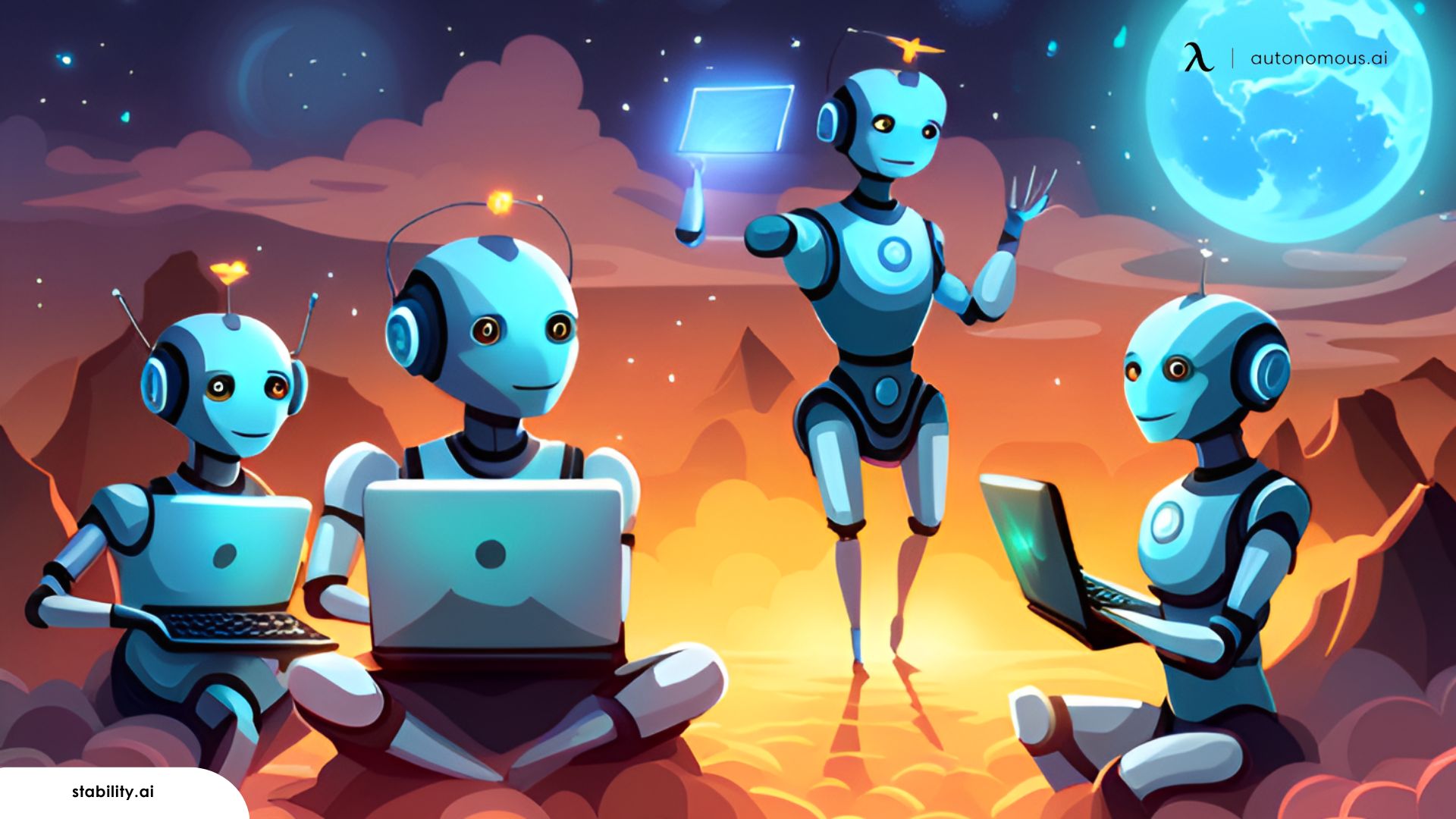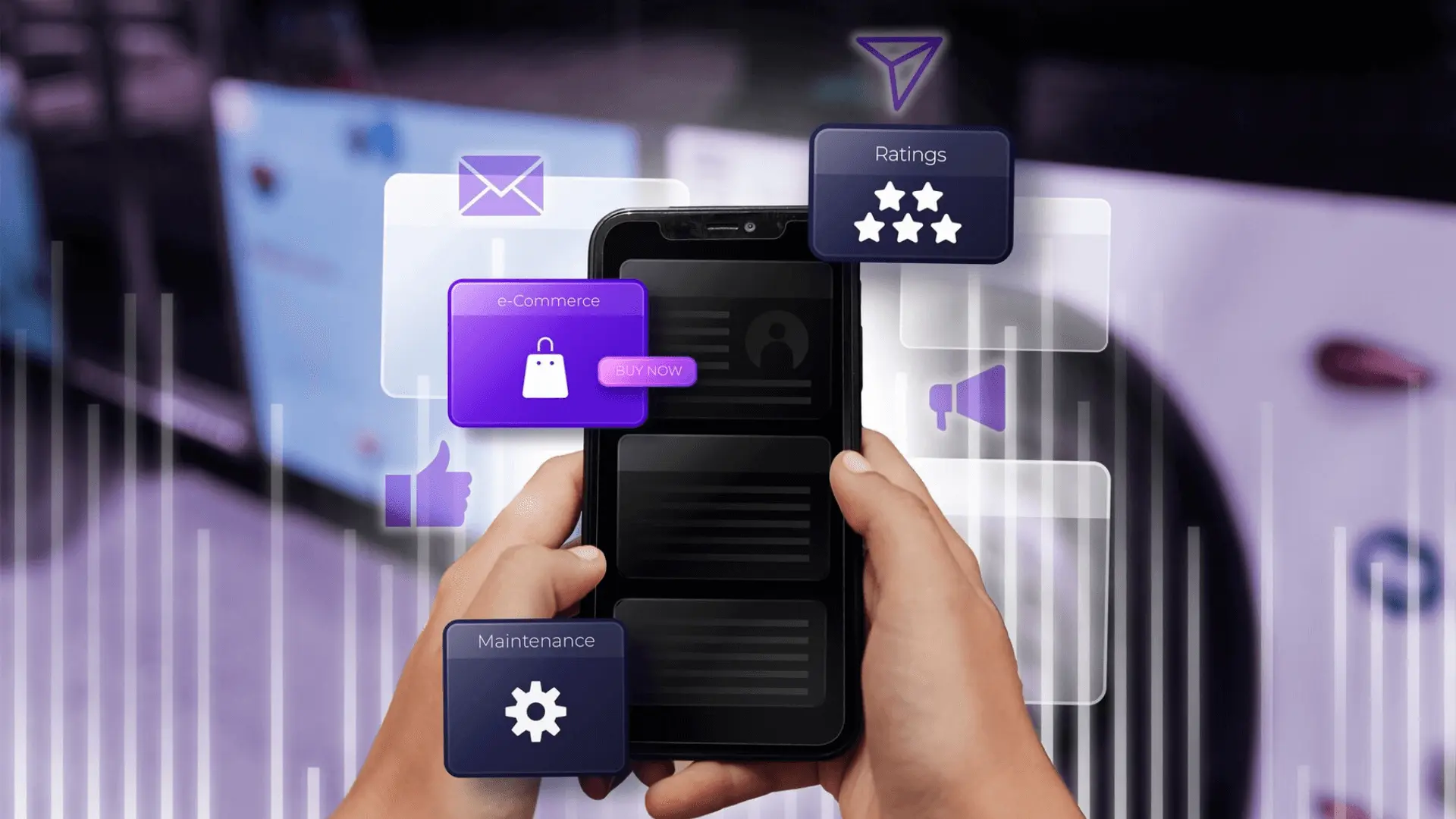
Table of Contents
Artificial Intelligence (AI) agents are changing the way technology interacts with us. These intelligent systems can observe their environment, process information, and take actions to achieve specific goals. Whether you're exploring the best AI agent platforms or aiming to create your own autonomous AI agent, understanding their mechanisms and applications is essential. This comprehensive guide explains how AI agents work, their types, benefits, and how you can create one with Autonomous Anon.
What Are AI Agents?
AI agents are intelligent systems or programs designed to autonomously perform tasks, either for users or other systems. They achieve this by organizing workflows and leveraging available tools to execute their functions efficiently.
These agents go beyond basic natural language processing capabilities. They excel in decision-making, problem-solving, interacting with their environment, and carrying out specific actions. This versatility makes them valuable across diverse applications, from IT automation and software development to conversational assistants and code-generation tools.
AI agents often rely on the advanced natural language processing capabilities of large language models (LLMs). This enables them to interpret and respond to user inputs in a structured manner, while also knowing when and how to utilize external tools to complete tasks effectively.

How Do AI Agents Work?
AI agents operate using advanced large language models (LLMs) as their foundation, which is why they’re often referred to as LLM agents. Unlike traditional LLMs that are limited by their training data, agentic technology goes a step further. It integrates backend tool-calling to access up-to-date information, optimize workflows, and autonomously create subtasks to achieve complex objectives.
This process enables AI agents to adapt to user expectations over time. By storing past interactions and planning future actions, they deliver personalized experiences and comprehensive responses. Tool-calling capabilities, performed without human intervention, expand the real-world applications of these systems. Let’s explore the three key stages of how AI agents work:
1. Goal Initialization and Planning
AI agents rely on human-defined goals and tools but autonomously design their workflow to achieve the desired outcomes. Three main influences shape an AI agent's behavior:
- Development Team: Designs and trains the AI system.
- Deployment Team: Provides the environment and access for the agent’s use.
- Users: Set specific goals and define the tools the agent can use.
Based on these inputs, the AI agent decomposes complex goals into smaller, manageable tasks. For simple objectives, this step may be skipped in favor of iterative improvements as the agent reflects on its progress. However, for intricate challenges, the agent plans subtasks to ensure a structured approach.
For example, if a user asks an AI agent to optimize their workflow, the agent analyzes the available tools and outlines subtasks like identifying inefficiencies, gathering external resources, and automating repetitive tasks.

2. Reasoning and Tool Utilization
AI agents take action by analyzing available information and utilizing tools to fill knowledge gaps. When their internal knowledge is insufficient, they access external resources like databases, APIs, web searches, or even other agents.
Let’s illustrate this with a scenario:
Suppose a user wants to plan a surfing trip to Greece and asks the AI agent to predict the best week next year for ideal weather. While the agent’s LLM core might not specialize in weather prediction, it can retrieve historical weather data from external databases. If that data alone isn’t enough, the agent creates another subtask—consulting a specialist agent trained in surfing conditions.
After gathering insights about high tides, sunny weather, and low rainfall as ideal surfing conditions, the agent combines this information to recommend the most suitable week. By self-correcting and updating its knowledge base at each step, the agent ensures accurate and tailored results.
This dynamic use of tools allows AI agents to be more versatile than traditional AI systems.
3. Learning and Reflection
AI agents improve over time through feedback and iterative refinement. Feedback can come from:
- Users: Providing corrections or preferences during and after the agent’s task execution.
- Other Agents: Offering insights when multiple agents collaborate to achieve a goal.
Returning to the surfing example, after the agent suggests an optimal week, the user’s feedback (e.g., refining preferences for weather conditions) is stored for future interactions. Similarly, if the agent collaborated with a weather-specialist agent, it could integrate that feedback to improve its knowledge base.
This continuous learning ensures the agent avoids repeating mistakes and adapts to evolving user needs. Known as iterative refinement, this approach allows AI agents to refine their reasoning and deliver increasingly accurate outcomes.

For more insights:
Agentic vs. Non-Agentic AI Chatbots
AI chat tools are categorized based on their level of autonomy:
- Agentic AI Chatbots: These systems operate autonomously, making proactive decisions without constant user input. For instance, a chatbot that schedules appointments based on user preferences.
- Non-Agentic AI Chatbots: These bots rely solely on user commands and react passively. They are often used for basic tasks like answering FAQs.
Types of AI Agents
AI agents can be classified into different types based on their design and functionality:
1. Simple Reflex Agents
These agents respond to current conditions using a straightforward “if-then” logic. They are effective for tasks requiring instant reactions but lack memory or learning capabilities.
Example: A thermostat adjusts the temperature based on current room conditions.
2. Model-Based Reflex Agents
Model-based reflex agents use an internal model of the environment to make decisions. They maintain state information to account for past interactions, allowing them to handle more dynamic scenarios.
Example: A robot navigating a maze while remembering previously visited paths.

3. Utility-Based Agents
Utility-based agents aim to maximize outcomes by weighing the potential benefits of different actions. These agents consider multiple variables and select the option with the highest utility.
Example: A recommendation system that suggests products based on user preferences and browsing history.
4. Learning Agents
Learning agents are the most advanced type. They adapt and evolve by analyzing new data and refining their algorithms. These agents are ideal for applications where the environment changes frequently, such as stock market prediction or medical diagnosis.
Example: A self-driving car learning to navigate complex traffic patterns over time.

By understanding these types of AI agents, you can determine which one best suits your needs.
Benefits of AI Agents
AI agents offer numerous advantages, making them indispensable across industries:
Task Automation
Generative AI advancements have propelled interest in intelligent automation to streamline workflows. AI agents excel at automating intricate tasks that typically require human intervention, enabling organizations to achieve goals faster, at a lower cost, and on a larger scale. Unlike traditional systems, these agents operate autonomously, eliminating the need for constant human input to guide their processes.
Enhanced Performance
Multi-agent systems often outperform single-agent models by leveraging diverse approaches to problem-solving. When multiple AI agents collaborate, they combine specialized knowledge and feedback to synthesize information more effectively. This interaction fills knowledge gaps and enhances their decision-making capabilities, demonstrating the power of agentic frameworks to push the boundaries of artificial intelligence.
Improved Response Quality
AI agents deliver responses that are more accurate, comprehensive, and personalized compared to traditional models. This enhanced quality results from their ability to exchange information with other agents, utilize external tools, and continuously update their knowledge. These behaviors are emergent rather than explicitly programmed, making AI agents a highly adaptive and dynamic solution for improving user experiences.

Risks and Limitations of AI Agents
Despite their advantages, AI agents come with challenges:
Dependence on Multi-Agent Frameworks
Complex tasks often require input from multiple AI agents. However, multi-agent systems can be prone to failure if foundational models have shared weaknesses or vulnerabilities. A flaw in one agent can cascade across the entire system, highlighting the critical need for robust data governance, comprehensive testing, and secure foundation models.
Risk of Infinite Feedback Loops
AI agents designed to function autonomously may occasionally fall into redundant behaviors, such as repeatedly invoking the same tools without making meaningful progress. This can create infinite feedback loops, wasting computational resources. Introducing real-time human oversight or error detection mechanisms can help mitigate these risks.
Computational Demands
Developing high-performance AI agents from scratch is both resource-intensive and time-consuming. Training such agents often requires substantial computational power and may result in lengthy processing times, especially for complex tasks. These challenges underscore the importance of efficient training frameworks and scalable solutions.

Create Your Own AI Agent with Autonomous Anon
Ready to build your own AI agent? With Autonomous Anon, you can design, train, and deploy AI agents tailored to your goals. The smarter your agent, the more subscribers and earnings you'll get.
- Define your objective: Clearly define the purpose and goals of your AI agent to ensure it aligns with your needs.
- Choose a name for your agent: Choose a unique and memorable name that reflects the agent’s function or personality.
- Describe your agent’s personality: Define the tone, behavior, and interaction style to create a relatable and engaging experience.
- Test and deploy: Evaluate your agent’s performance in real-world scenarios, make adjustments, and deploy it for use.

Conclusion
AI agents are revolutionizing industries with their ability to perceive, process, and act autonomously. By understanding their types, benefits, and risks, you can harness their potential to solve complex problems. Whether you're exploring AI agent frameworks or building one with Autonomous Anon, the possibilities are endless. Start creating the best AI agent for your needs today and embrace the future of intelligent automation.
Bleiben Sie mit uns in Verbindung!
Abonnieren Sie unsere wöchentlichen Updates, um über unsere neuesten Innovationen und Community-Neuigkeiten auf dem Laufenden zu bleiben!
Interesse an einer Linkplatzierung?
Sag es weiter
.svg)



/https://storage.googleapis.com/s3-autonomous-upgrade-3/production/ecm/230914/bulk-order-sep-2023-720x1200-CTA-min.jpg)

